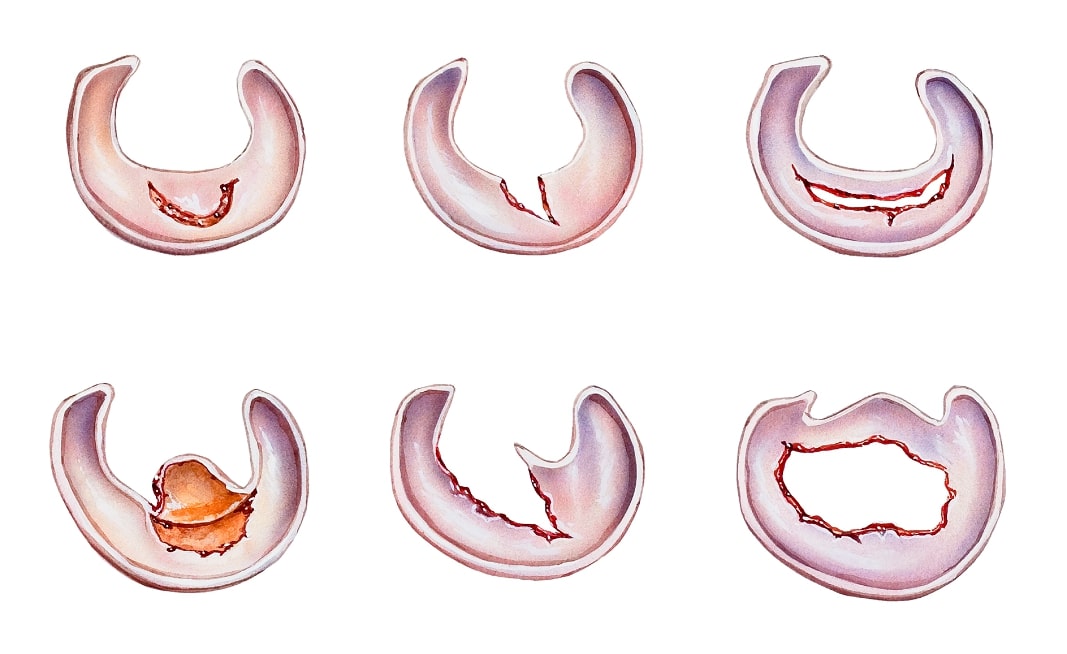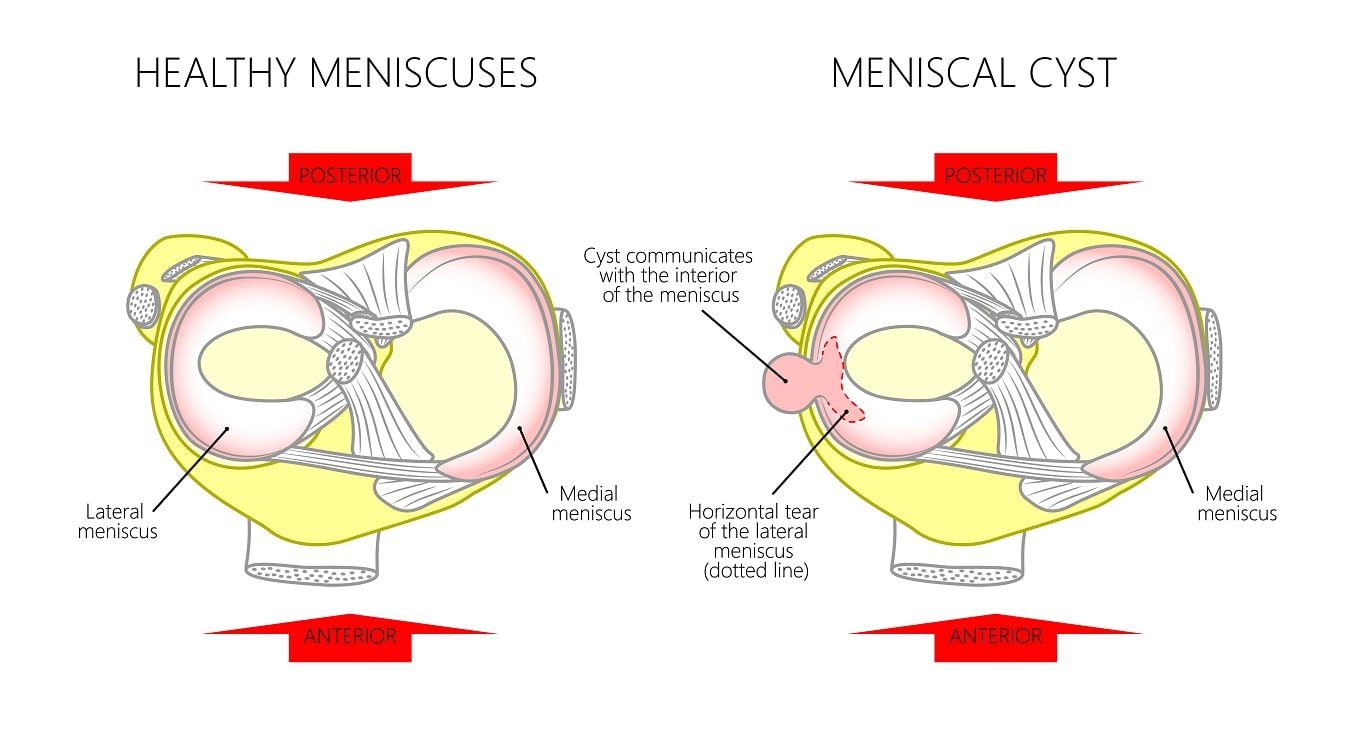Function
The medial meniscus is a C-shaped triangular structure with an average width of 9-10 mm and the lateral meniscus is more circular and covers a larger portion of the articular surface. Its average width is 10-12 mm. 
The function of both menisci is force transmission by increasing the congruency leading to decreased point loading. It also acts as a shock absorber transmitting 50% of the weight in extension and 85% in flexion. Both menisci are secondary stabilizers by deepening the tibial surface. If the anterior cruciate ligament is deficient the menisci become the primary stabilizers of the knee
Injuries
Injuries to the meniscus are the most common reasons for surgery. 
In general tears to the medial meniscus are more common with the exception of combined acute anterior cruciate ligament and meniscal injuries which affects the lateral meniscus more commonly. In older patients tears of the posterior part of the medial meniscus are more common. Tears can occur anywhere in the meniscus. If they occur in the outer zone they have a good potential to heal as this part is quite well vascularized. Tears in the middle third have a potential to heal but tears in the inner third have no healing potential. Pain localized to the joint lines, mechanical symptoms such as clicking and locking suggest a meniscal tear. Several clinical examination techniques exist but the most sensitive diagnostic test is the MRI. Treatment depends on the location, size and tear pattern. Initial non-operative treatment is indicated for degenerative tears. Surgical options include partial removal, repair or transplantation if the meniscus requires near total removal. Meniscus surgery is performed keyhole.
Meniscal cysts
If joint fluid collects within or adjacent to the meniscus, the condition is called a meniscus cyst. 
Medial meniscus cysts are more common and typically occur in the posterior horn. Lateral meniscal cysts are usually seen in the anterior horn or mid-portion. Cysts form with a meniscal tear when the tear functions as a one-way valve. Most of the cysts are asymptomatic but can cause pain, knee swelling and mechanical symptoms (locking and clicking). Often they present as a hard palpable mass in knee extension. Initial treatment consists of rest, anti-inflammatory medication and rehabilitation. Aspiration can be attempted in young patients but is associated with poor outcomes in older patients. Operative intervention is indicated with unrepairable tears or if the symptoms persist.
